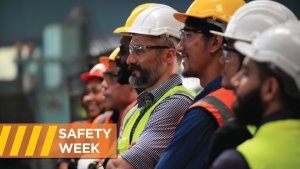In this second guest column for FCA Insurance Brokers, I’d like to discuss labour shortages.
Not only has construction been impacted but all sectors are facing a shortage of skilled workers.
What is more concerning is that it could be argued many sectors are facing a shortage of “interested” workers.
Whether it is high-tech, hospitality or the construction industry this problem is an overriding concern for all employers and is having a negative impact on our economy.
My opinion is that this will continue despite the massive efforts being made by today’s governments and employers.
The calls from employers saying, “We have jobs, that pay well, have benefits, and we will train,” go unheeded.
Putting this into a historical perspective, Canada through the 1950s to 1990s had a buoyant economy and a large supply of new immigrant labour. Many of these immigrants were particularly well suited to work in the construction industry.
During this period we saw the Irish, Italians, English and Portuguese, among others, come to Canada and help build many of the great infrastructure assets we now enjoy.
With a steady supply of skilled labour there was no urgency on governments, associations and employers to invest in training or education to ensure the future availability of labour in our industry.
In 2002 when I joined the Ontario General Contractors Association (OGCA) as president, I was made aware that this labour shortage was a looming problem for the industry as the current workforce was retiring within five to 10 years. At that point, if unaddressed, we would be short thousands of workers in the skilled trades.
The sad part is that as an association, we had trouble convincing government to break down the barriers to improve opportunities for people to work in the construction industry.
Part of the OGCA’s mandate was to tackle these issues. The association developed an extensive school program for career days, we created a speaking book and trained speakers to present an engaging look at our industry. We spent several years going into the schools, speaking to all age groups to make these presentations.
Others in the industry were also making efforts but unfortunately it was a disjointed and fragmented effort and there was no overall co-ordination.
Great programs were being developed by those like Skills Ontario, but we had a long way to go and there was still no urgency from those in government.
There was a time in the past when a career in the trades was seen as a positive choice.
Unfortunately, there is now, at best, ambivalence towards the industry from guidance counsellors, educational advisers and teachers.
Some have even referred to our industry as the “career of last resort.” This is compounded by parents of these children who shun the trades as a career and instead advise their children to take careers as doctors or bankers.
At the end of a presentation at one particular school I vividly remember a student telling me how impressed she was with our industry and had been considering a career as an engineer.
She was getting ready to go to university and I encouraged her to follow that passion.
However, she was downcast and when I asked why, she said her parents would not allow her to do that and had told her she must go into the medical profession.
This stigma that the work we do does not measure up to other professions has plagued the industry for years. The current government is making efforts to change that opinion by providing training and funding and yet we are not seeing results.
There are solutions being proposed including increased immigration, community benefits and other social programs.
Sadly, these are made by people who have no idea how our industry works. Unfortunately, many of the policies enacted or discussed are purely political and don’t create the desired results.
The elephant in the room is that large numbers of people looking to enter the workforce are not interested in construction.
In my opinion we must acknowledge that people are not interested in our jobs and in some cases don’t have the work ethic for it.
Ultimately, we need to acknowledge that this challenge is one of perception, one of policy and one of instilling in our youth that working with your hands doesn’t mean you aren’t a professional.
I can say with confidence that a career in the trades is a fulfilling career that can provide financial stability and the chance to be part of building our great country.
Collectively, those in government along with associations, workers and construction company owners need to build a comprehensive plan that clearly illustrates the positives of a career in the trades.
This will ensure the next generation 10 years down the road will see the merits of a career in the trades.
Clive Thurston, former president of the OGCA, is being featured as a guest columnist in this two-part series for Surety Corner. Read part one here.
Thurston is currently president of Thurston Consulting Services Inc.











Recent Comments
comments for this post are closed